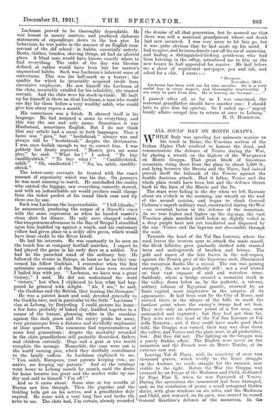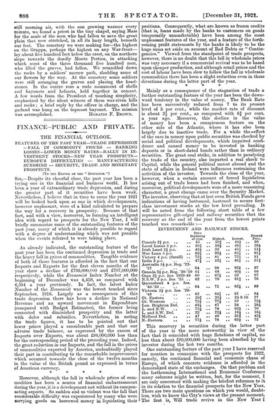ALL SOULS' DAY ON MONTE GRAPPA.
WHILE Italy was speeding her unknown warrior to his tomb in Rome, the Venetian section of the Italian Alpine Club resolved to honour the dead, and commemorate the defence of Venice during the War, by placing a wreath on the highest of the War-graves on Monte Grappa. That great block of limestone mountain, rising sheer from the plain to about 5,500 ft., and lying between the Brenta and the Piave, had indeed proved itself the bulwark of the Veneto against the double Austrian attack. Had it fallen, Venice and the whole plain would have been lost and the defence thrust back to the lines of the Mincio and the Po.
The stars were fading in the sky when we left Bassano about six o'clock in the morning, our wreath on the roof of the second camion, and began to climb General Cadorna's superb military road, constructed during the War —an essential factor in the defence of the mountain. As we rose higher and higher up the zig-zags, the vast Venetian plain unrolled itself below us, slightly veiled in a deep purple haze not yet irradiated and dispersed by the sun—Venice and the lagoons not discernible through the mist.
Towards the head of the Val San Lorenzo, where the road leaves the western spur to attack the main massif, the bleak hillsides grew gradually clothed with stunted trees and undergrowth of bracken and briony. The gold and russet of the late leaves in the oak-copses, against the French grey of the limestone rock, illuminated the mountain flanks like a missal. The sun was gaining strength ; the air was perfectly still ; not a soul stirred on that vast expanse of arid and waterless stone. Suddenly, where a bridge crossed a mountain track in the valley, down below us, by the pathside, a solemn, solitary column of Egyptian granite, crowned by an Ionic capital, most impressive in the surprise of its appearance. It had been sent by the City of Rome, and erected there, in the silence of the hills, to mark the furthest point where the enemy's troops had set foot. They were only an advance patrol of a few men, soon surrounded and captured ; but they had got thus far. They were over the head of the Val San Lorenzo at Col della Berretta ; and, if they could have made good their hold, the Grappa was turned, their way was clear down the valley, and Venice and the plain were, in all probability, lost. But they did not. The fighting on the Grappa was a purely Italian affair. The English were never on the mountain and the French were on Monte Tomba, at its extreme east end.
Leaving Val di Piana, with its cemetery of over two thousand graves, which testify to the fierce struggle on the Asolone, we made straight for the summit, now visible to the right. Before the War the Grappa was crowned by an Image of the Madonna and Child, dedicated by Pope Pius X. when he was Patriarch of Venice. During the operations the monument had been damaged, and, on the conclusion of peace, a small octagonal Gothic shrine, with glass windows on six sides, and the Madonna and Child, now restored, on its apex, was erected to record General Giardino's defence of the mountain. In the still morning air, with the sun growing warmer every minute, we found a priest in the tiny chapel, saying Mass for the souls of the men who had fallen to save the great plain that now stretched, in. all its hazy length, beneath our feet. The cemetery we were making for—the highest on the Grappa, perhaps the highest on any War-front- lay about five hundred feet below the crest, on the northern slope towards the deadly Monte Pertica, in attacking which most of the three thousand five hundred men, who filled the graves, had fallen. We scrambled down the rocks by a soldiers' narrow path, shedding some of our flowers by the way. At the cemetery some soldiers were still arranging the graves and placing the head- stones. In the centre rose a rude monument of shells and bayonets and helmets, held together in cement. A few words from the President of touching simplicity, emphasized by the silent witness of these war-riven hills and rocks ; a brief reply by the officer in charge, and the garland was hung on the topmost bayonet. The mission



































 Previous page
Previous page